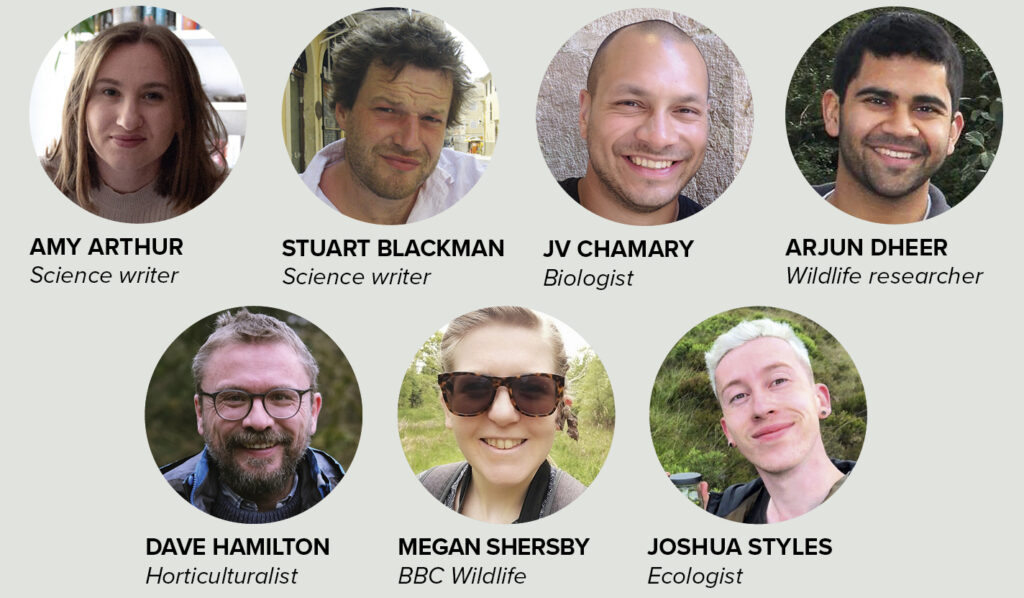Q & A
Email your questions to wildquestions@immediate.co.uk
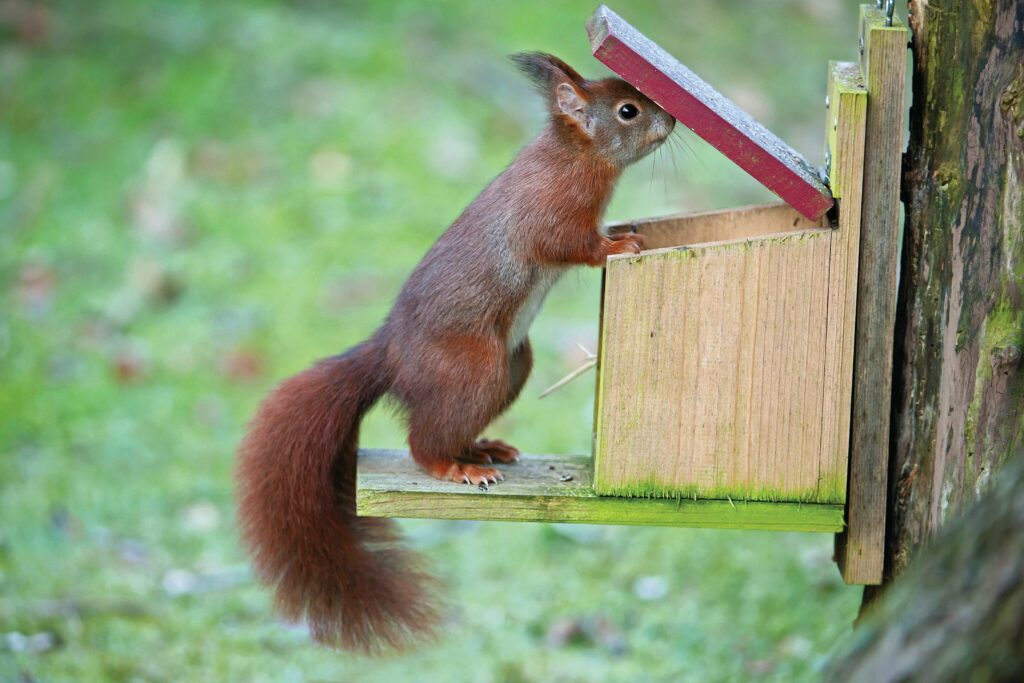
Is it okay to feed red squirrels?
AMY ARTHUR ANSWERS
Despite the joy of seeing a red squirrel up close, recent research suggests that feeding them may be harming the species. The iconic rodent, once widespread in the UK, is now only found in a handful of woodlands. As breeding is limited within these isolated populations, changes to diet or habitat, or the introduction of disease can impact an entire population in just a few generations.
Analysis of over 250 skulls from different locations in the UK has shown significant changes to the jaws of red squirrels in Formby, Liverpool. Here, the usual diet of hazelnuts and pine seeds has often been supplemented with biscuits, chips and peanuts from humans. These treats require much less chewing, which researchers say could have caused the changes to the squirrels’ masseters (cheek muscles) and made wild foods harder to consume. Long term, the change in diet could affect trees that rely on these animals spreading seeds, along with the woodland species that depend on them.

Is the mountain chicken really a chicken?
MEGAN SHERSBY ANSWERS
Despite the name, it isn’t a chicken – and nor is it a mountain. Instead, the mountain chicken is actually a species of frog which is native to Dominica and Montserrat. Also known as the giant ditch frog, the main reason for its local name of mountain chicken is that it is said to taste like chicken, though the name could also be derived from its large size, or its chickenlike and squawking alarm call.
Sadly, this large frog is now at risk of extinction and is listed as Critically Endangered. A combination of habitat destruction, invasive species and hunting have contributed to its decline, but the main cause for the recent plummet in numbers is a chytrid fungus, which causes the fatal disease chytridiomycosis.
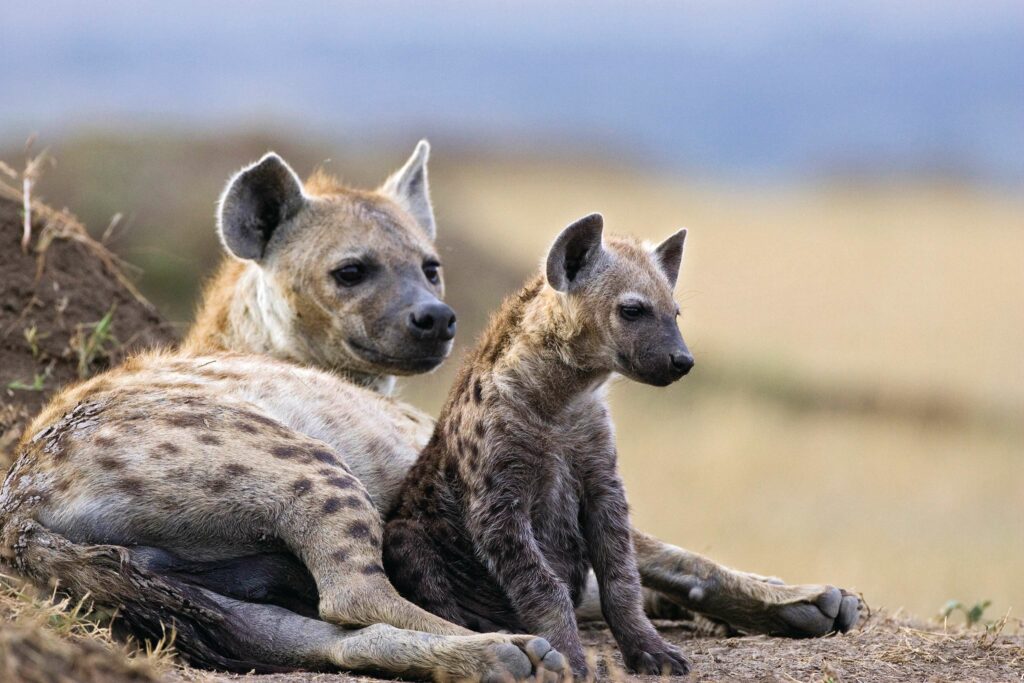
Why do female spotted hyenas have a pseudopenis?
ARJUN DHEER ANSWERS
Of the four extant species, only female spotted hyenas have a pseudopenis – and in fact, they are even more unique in being the only female mammals to lack an external vaginal opening! We still aren’t sure why the females have a pseudopenis, but it clearly has its perks, and there are two main ideas explaining its evolution.
Firstly, it means they have absolute control over who they mate with, and their full cooperation is required. Males do not provide any offspring care, which means females have to bear the burden, so it makes sense for them to be choosy about which males sire their young: they want to maximise the survival of their cubs.
Secondly, because female hyenas are more likely to suffer aggression from other females, it’s possible that the pseudopenis is a sort of masculine ‘camouflage’ to deter attacks – this could be particularly useful for female cubs at risk of infanticide.
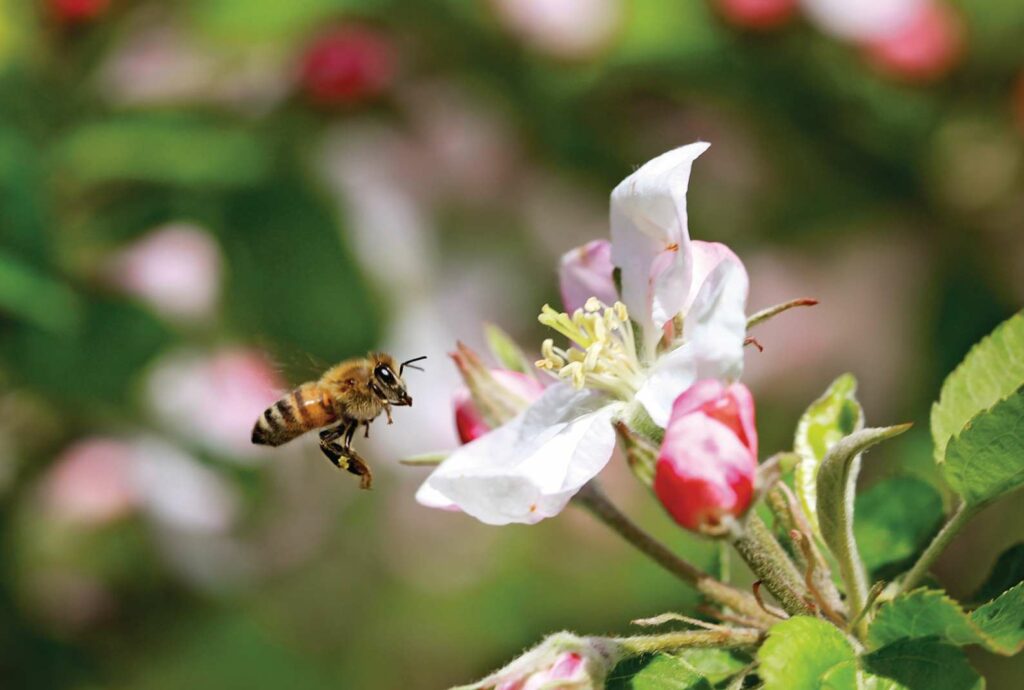
What are pollination partners?
DAVE HAMILTON ANSWERS
Many domesticated fruit trees are monoecious, meaning they have either flowers with male and female parts, or they have separate male and female flowers on the same tree. Strangely though, not all are self-fertile; some require pollination partners. This is another tree of the same species but of a different variety (two of the same variety cannot pollinate each other).

What happened to the last thylacine?
AMY ARTHUR ANSWERS
The thylacine was an Australian marsupial, though dark stripes along its back led to it being given the nickname Tasmanian tiger. Unfortunately, an encroaching human population, a changing landscape and, later on, a bounty on its head put the thylacine on a short path to extinction.
The last known member of the species died in captivity in 1936. Its body travelled to the nearby Tasmanian Museum and Art Gallery, but for years curators and researchers couldn’t find it among the collection and assumed the last thylacine had been discarded.
That is until 2022 when museum curator Kathryn Medlock discovered an archived, unpublished taxidermist’s report from 1936 that mentioned the specimen. After reviewing all the thylacine skins and skeletons in the collection and tracing them to their related records, one disarticulated skeleton and flattened skin remained – those of the last thylacine. They had once formed part of an educational exhibit, toured around schools, but can now be seen on display in the museum.
A handful of apple trees, including Granny Smith and Cox Queen are selffertile and do not need a pollination partner. A few more, such as the Egremont Russet, James Grieve and Cortland varieties, are somewhat self-fertile but yields are far higher with a pollination partner. However, the vast majority have not been selected for this trait and will need a partner to fruit. Although self-fertile trees have all kinds of advantages, they lack genetic diversity and defects in a parent tree can be reproduced in its offspring.
RECORD BREAKER!
What is the world’s biggest beetle?
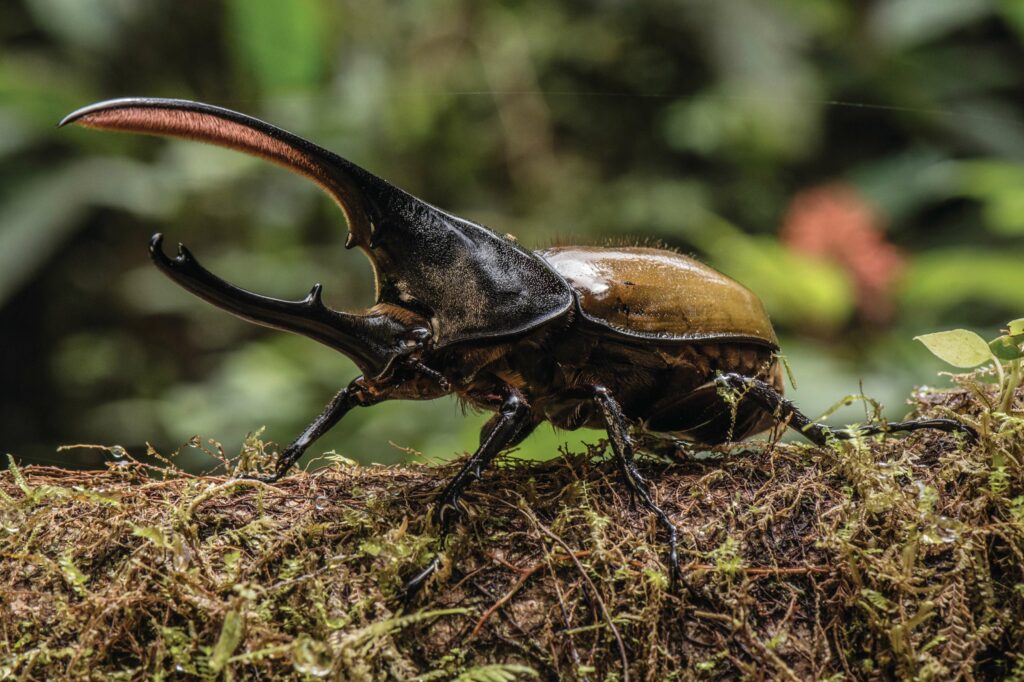
In terms of length, two impressive species battle it out for this title, both measuring over 15cm. The male Hercules beetle (Dynastes hercules) has an astonishing horn which, combined with body length, means that he can reach up to 19cm. However, the other contender – the titan beetle (Titanus giganteus) – has a body length of up to 16.7cm, without needing any horns to measure so large.
FACT.
Some mushrooms glow in the dark. They contain luciferins – the same compound that makes fireflies light up. Glowing attracts insects, which help to spread the mushroom spores.
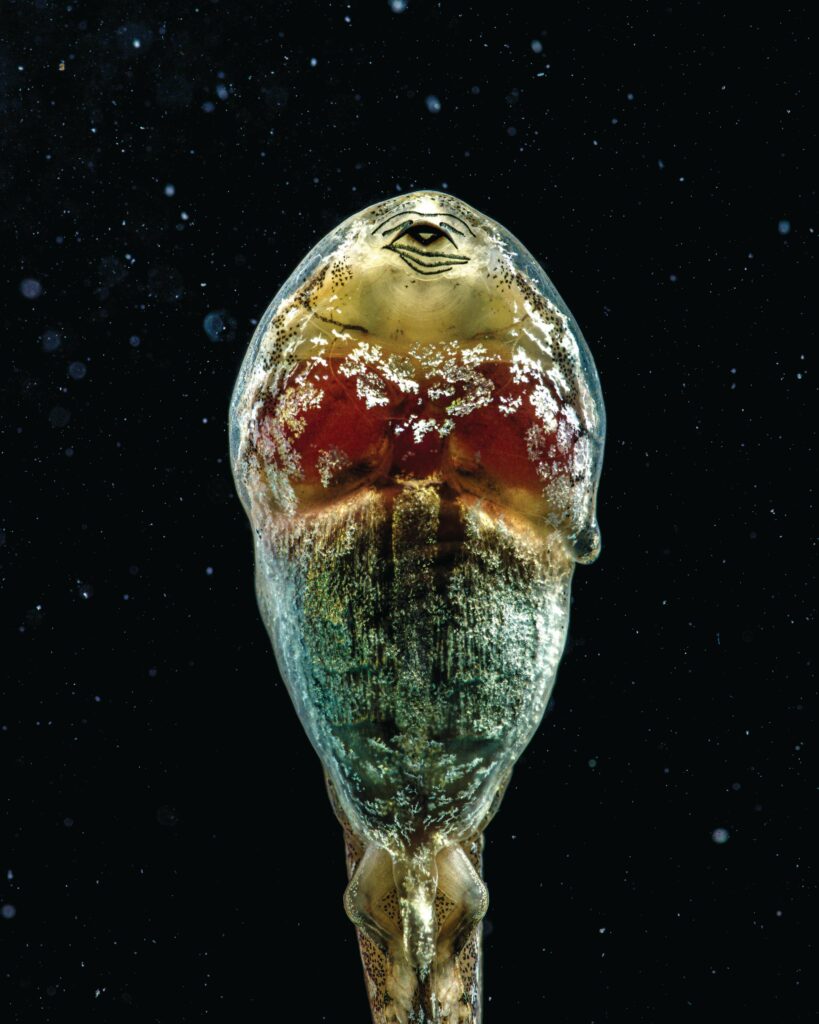
WHAT ON EARTH?
Belly up
As members of a largely land-lubbing species, we are used to gazing down on pond life from above. But things can appear very different from below, as this unusual angle on a familiar animal proves. If it’s possible to view the world in a grain of sand, then why not in a tadpole’s belly? This fine specimen even seems to have its own miniature weather systems swirling around on its underside – an illusion generated by surface pigments and internal organs showing through translucent skin. Only the incipient frog-legs at the rear and complex rasping mouthparts up front betray its true identity.
FAST ANSWERS
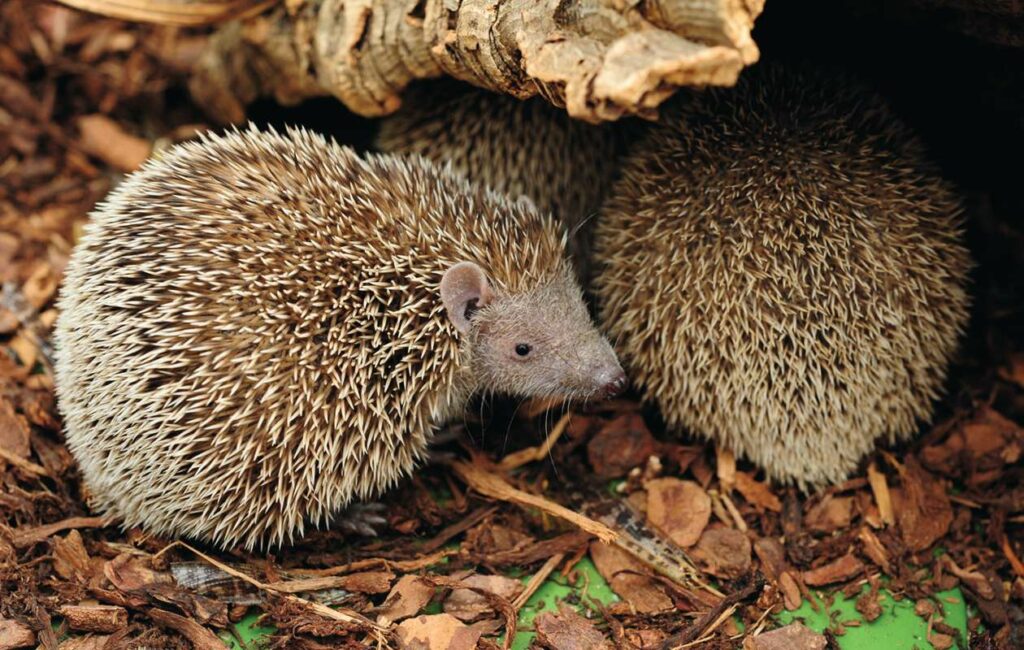
Are tenrecs hedgehogs?
With sharp spikes and a pointed noise, some of the tenrec species (such as the lesser hedgehog tenrec pictured above) bear a close resemblence to hedgehogs – but in fact, they aren’t at all related. They don’t even belong to the same order as hedgehogs, and are more closely related to elephants. Other tenrecs more closely resemble shrews, but again, there’s no relation. MS
How loud is a bittern’s boom?
Although highly secretive and wellcamouflaged, bitterns are also the loudest bird in Britain. It’s the males that produce this foghorn noise, which booms out across the reedbeds at about 100 decibels and can carry up to 5km away in good conditions. If you fancy hearing them booming, it’ll require some planning as they are best heard just before dawn or just after dusk. Once extinct in Britain, bittern numbers have recovered thanks to dedicated conservation efforts. MS
Why are dandelions so called?
The name dandelion is derived from the French ‘dent de lion’, meaning ‘tooth of the lion’. You may think that dandelions were given this name because they are in some way ferocious and fearsome, but actually it is due to their serrated leaves, which have the appearance of many sharp, feline teeth. JS

INSTANT EXPERT
Parasites: from pests to puppeteers

Parasite. The word alone can make your skin crawl. Parasites are viruses or organisms, and can be anything from inconvenient pests that don’t normally kill to mind-controlling puppet masters with (often disgusting) life strategies that have evolved to benefit themselves at the cost of other life-forms: their hosts.
What is parasitism?
It’s a relationship in which one partner exploits the resources of the other. Those resources are typically food – sometimes in the form of body parts – so a parasite will harm the host by reducing its ability to survive and reproduce.
Parasites are generally smaller than their hosts and tend to consume the body, making them micropredators. As the biologist E OWilson once neatly put it, parasites are “predators that eat prey in units of less than one”.
Where do parasites live?
Some, such as worms and bacteria, are endoparasites that inhabit a host’s body or live inside its cells. Others, such as sapstealing aphids and blood-sucking leeches or vampire bats, are ectoparasites that attach to the outside surface.
Then there’s mesoparasites that become embedded in their host’s body. Some will even remove organs, such as the tongueeating louse (Cymothoa exigua), which enters a fish via the gills then replaces its host’s tongue. They could be said to look kind of cute!
Ew, no! How are parasites transmitted?
They use various routes, as illustrated by arthropods. Some, such as human head lice, jump directly from host to host. Others have a free-living stage and can travel between hosts, so they also serve as vectors that carry even tinier, disease-causing parasites (pathogens) – for example, the mosquitoes that deliver malaria parasites.
Many parasites, including tapeworms and nematodes, are transmitted trophically – meaning a parasite is eaten by the host, often via the ‘faecal-oral’ route.
Yuk. What’s a parasitoid?
It’s a parasite that kills its host. For instance, an adult endoparasitoid wasp paralyses its host with a sting then lays eggs on its body, which its young consume.
Ectoparasitoid wasps inject eggs into the body that gestate inside their ‘living incubator’, growing along with the host until the young insects eat their way out – which was the inspiration for the ‘chestburster’ Xenomorph in the film Alien.
Didn’t you mention mind control?
Yes! While parasitic animals sense hosts using specific cues (a mosquito uses body odours), certain brainless parasites release mind-controlling substances that manipulate behaviour to maximise their chances of reaching new hosts.
One famous example is the zombie ant fungus (Ophiocordyceps unilateralis) which, in order to spread, prompts its insect host to bite a leaf or twig above a colony before the parasite’s ‘fruiting bodies’ grow from the ant’s head then rupture to release fungal spores, which fall down to infect the ants below. The idea that fungi could do the same to people inspired the video game (and now TV series) The Last of Us.
What’s brood parasitism?
Some species don’t bother to rear young and instead lay their eggs in the nests of ‘foster parents’ – hosts that incubate then feed the parasitic offspring.
The most well-known example is the common cuckoo, whose eggs mimic the colours and patterns of a host’s eggs to minimise rejection. Cuckoo chicks often hatch first and, while still blind and naked, evict other birds from ‘their’ nest.
So how common are parasites?
Across the animal kingdom, an estimated 40 per cent of species are parasites themselves. Parasitic plants are rare, at about 1 per cent of flowering species, and use a root-like structure called a haustorium to penetrate other plants and siphon-off liquid nutrients.
Parasitic relationships are often a co-evolutionary arms race. Over time, as natural selection drives a parasite to evolve features that enable infection, adaptations such as physical barriers help protect hosts against invasion. Many animals develop a tough epidermis, while plants may have thick cells walls and tree bark. To withstand parasites, you need a thick skin.
BBC WILDLIFE EXPERTS
